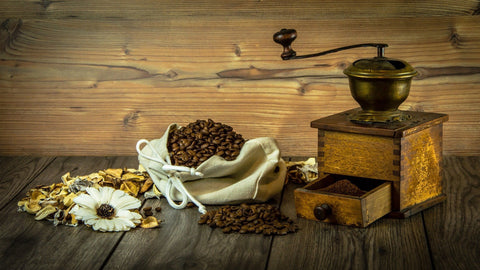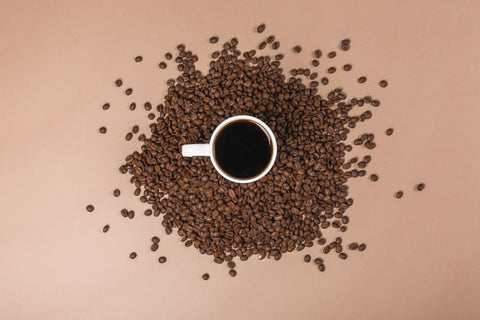When it comes to great tasting coffee, coffee wholesalers, retailers, and food service vendors remind people (customers and the public) about the importance of high-quality beans, the proper coffee maker, and even the ideal type and temperature of water for perfect coffee - almost ad infinitum. One of the most vital components of excellent coffee is the quality and consistency of the grind. Whether you’re a coffee shop owner, a small scale roaster who also serves coffee on site, or a coffee aficionado who wants to enjoy the freshest, and best-tasting coffee at home or work, you’ll always get the best result when you grind coffee beans just before you plan to use them.
You may have seen advertisements for coffee grinders in gourmet food store catalogs, restaurant or food service supply catalogs, on grocery store shelves, or in coffee shops. You may be familiar with two types of coffee grinders that monopolize the retail and wholesale market: burr and blade grinders. We’re going to discuss the differences, how they work, and features that enhance each of the respective designs. If you have ever considered buying a coffee grinder but were too overwhelmed to make a practical and economically wise decision, this guide will clarify any confusion that stood or stands in your way.
Blade Grinders
Blade grinders are regularly sold at big box stores, grocery stores, and inexpensive kitchen supply stores. They are typically small devices that are ideally suited to places with limited storage. If you’re lucky enough to find a better quality blade grinder (that’s not saying much), it will have a design that features a small compartment and propeller-like blades that has prongs. The prongs assist the propellers in chopping the coffee beans. The blades have to be close to the bottom of the chamber because the motor in the encasement below the chamber controls the propellers’ movement.
Blade grinders have a single button that functions as the on-off switch. There is no way to control the speed at which the blades move, so, unfortunately, the fine grounds that float to the bottom of the container hit the blade repeatedly. Since larger pieces are pushed back up, blade grinders produce inconsistent results that yield a chamber full of chopped up coffee beans of every size and shape you can or cannot imagine that is mixed with powdery fine hot particles.
The longer the blades spin, the hotter the motor, the blades themselves, the compartment, and the grinds inside it get. The heat that blade grinders generate will have an impact on the ultimate flavor of the coffee. With a blade grinder, you may lose the flavor-defining characteristics of a particular type of coffee bean or roast color.
Burr Grinders
Burr grinders get their name from the two pieces (called burrs) that are identical to one another and whose serrated edges lie edge-to-edge. The burr components are made of a ceramic material or stainless steel. These types of coffee grinders are built for longevity and durability. Although they cost more to buy, that higher purchase price is offset by the fact that they’ll outlast blade grinders by many years. A burr grinder doesn’t generate the amount of heat that blade grinders do. Consequently, the coffee you make after grinding beans in a burr grinder will taste better.
Two Types of Burr Grinders
There are two types of burr grinders. Their respective names refer to elements of their design. All burr grinders are made up of two parts: the larger circular piece with serrated or tooth-like edges, and a smaller piece that fits inside the larger circle. On conical burr grinders, the interior portion of the grinding mechanism is cone shaped. A metal piece with teeth-like ridges is attached to the cone portion of a conical burr grinder. Those teeth break up coffee beans before they go travel to the larger circle where they get crushed before they enter the collection chamber.
Flat plate grinders have two rings that lie parallel to one another. Each ring has teeth-like edges. The beans travel between the two burrs where they are crushed and ground before sliding into the collection compartment.
Flat plate burr grinders move faster, generating more RPMs. By making more repetitions per minute, they also produce more heat. That can be a negative factor, especially if that heat causes coffee oils to vaporize. Flat plate grinders can also create a static charge that ground trap ground coffee when the coffee grinds stick to the sides of the collection receptacle. Flat plate burr grinders are also more likely to get clogged, and clogged burrs can affect the taste of subsequent grinds.
Conical burr grinders tend to be more expensive. They don’t trap coffee, and there’s less - if any likelihood that static electricity will negatively impact the taste of your coffee, and they don’t generate as much heat.
Our Coffee Grinder Recommendation
When it comes to coffee grinders, the adage about getting what you pay for couldn’t be more accurate. Higher quality coffee grinders come with a higher price tag. So whether you’re a coffee shop that prides itself on serving the tastiest, freshest, and the best coffee in your area or you’re the owner of a small coffee roasting business, and you want to sell coffee making supplies as well, do yourself and your business a favor: go with a burr grinder. Home coffee lovers can heed the same advice.
If you love espresso, the combination of one of our outstanding espresso blends and a conical burr grinder is a recipe for the best tasting dark roasted coffee you’ll ever taste. At Java Bean Plus we stand by that claim with our promise of complete satisfaction.
Source
https://www.beanground.com/conical-vs-flat-burr-grinder/
https://www.baristamagazine.com/conical-versus-flat-burrs-tasters-decide-compak-workshop/
https://ggccoffee.com/conical-burr-vs-flat-burr-grinders/
https://prima-coffee.com/learn/section/buying-guides/grinders
https://lifehacker.com/five-best-burr-coffee-grinders-1653494382
https://www.wholelattelove.com/blog/grinders-101---a-beginners-guide
https://www.javapresse.com/blogs/grinding-coffee/blades-vs-burrs
https://driftaway.coffee/conical-vs-burr-grinder/
https://www.homegrounds.co/flat-vs-conical-burr-grinder/
https://www.coffeedetective.com/burr-coffee-grinder.html
https://1912pike.com/mind-the-grind/
https://www.thespruceeats.com/blade-or-burr-grinder-765770
https://www.littlecoffeeplace.com/burr-grinder-vs-blade-grinder
https://www.thekitchn.com/coffee-tools-what-kind-of-grinder-should-i-use-204496



